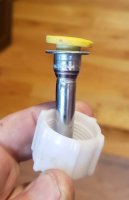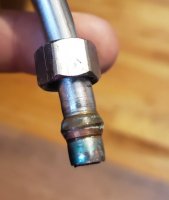Reach4 submitted a new resource:
Rigid copper supply riser - How to install a rigid chrome-plated copper riser to a toilet or faucet
Read more about this resource...
Rigid copper supply riser - How to install a rigid chrome-plated copper riser to a toilet or faucet
The flex plumbing lines are the most common way and easier way to connect from a stop valve to a toilet or faucet. However the chrome-plated rigid "copper riser" lines are not as hard as I used to think... but I admit to having not yet attemped one. I am looking forward to trying if I ever replace at toilet fill valve in the future. If somebody notes some error for me to correct or suggest a good improvement, I will edit this. This is also my first "resource" posting. I am not a plumber.
The...
Read more about this resource...


